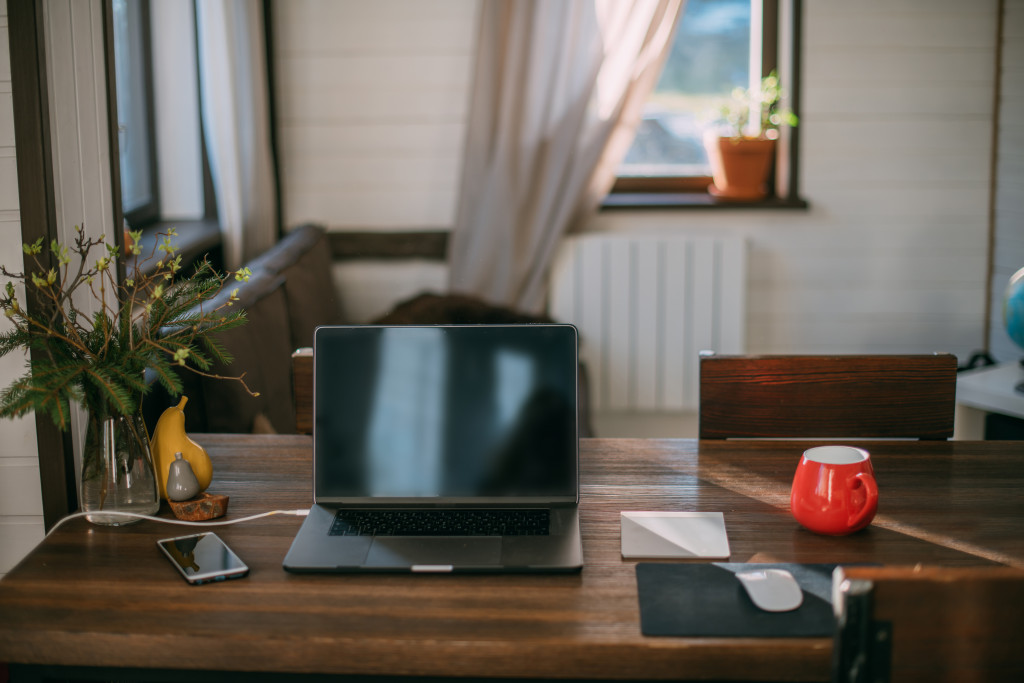Working from home has become the new normal for many of us in the wake of the COVID-19 pandemic. According to a recent poll, about a third of Americans are now working at least some of the time remotely. They’re doing it from coffee shops, kitchen tables, spare bedrooms—and even from dedicated home offices.
And while some people may enjoy the flexibility and freedom that comes with working from home, others may find it challenging to stay focused and motivated in their makeshift home offices. If you’re in the latter camp, consider making some changes to your home office setup so that it’s more comfortable and conducive to productivity. Here are a few tips to get you started.
1. Find a Quiet Space
One of the challenges of working from home is that distractions are often around you. If possible, try to find a quiet space in your house where you can set up your office away from the hustle and bustle of everyday life. This will help you stay focused and avoid getting distracted by things like the TV or laundry that needs to be done.
You can also choose to build a detached home office in your backyard. This will provide you with the peace you need to get work done while also giving you some fresh air and vitamin D. Just make sure that your office is well-insulated, so you’re not too hot or too cold. Hiring a skilled general contractor can help you build the perfect detached home office for your needs.
2. Make it Comfortable
Another thing that can impact your productivity when working from home is discomfort. If you’re not comfortable, it’s hard to focus on your work. So, make sure your home office is set up in a way that promotes comfort. This may mean investing in a comfortable desk chair or adding a light source, so you’re not straining your eyes.
Some remote workers also find that standing desks help them stay comfortable and focused throughout the day. If you are tired of sitting, consider investing in a standing desk or converting your existing desk into one. You can also try using a laptop stand to raise your screen to eye level.
3. Reduce Distractions
In addition to finding a quiet space and ensuring you’re comfortable, you can also reduce distractions by eliminating their sources. For example, if you have a TV in your home office, consider removing it or at least not turning it on when you’re working.

You can also reduce distractions by limiting the number of people who have access to your office space. If possible, let your family or roommates know that you’re not to be disturbed while you’re working, and close the door to your office, so you’re not tempted to socialize. You can also try using noise-canceling headphones to help you focus.
4. Set Ground Rules
Many people find it helpful to set ground rules for themselves when working from home. This may mean setting office hours and sticking to them, or only working in your office space, not in bed or on the couch.
You may also want to establish rules for how you’ll handle interruptions. For example, you may decide to take a break every hour to answer emails or return phone calls. Or, you may designate certain times of the day for responding to messages, so you’re not interrupted while working. If possible, let your family or roommates know about your rules, so they can help you stick to them.
5. Add Personal Touches
Finally, one way to make your home office feel more like yours is to add personal touches that reflect your personality and style. This might include hanging artwork on the walls, adding some greenery, or simply setting out photos of your loved ones. These small touches will help make your space feel more inviting and inspire you to be productive.
When adding personal touches, be careful not to go overboard. Too many personal items can actually be distracting and make it harder for you to focus on your work. So, start with a few things and see how they impact your productivity before adding more. You may also want to consider using a vision board to help you stay focused on your goals.
If you’re finding it difficult to stay motivated while working from home, there are several things you can do to change that. The above tips can help you create a comfortable and productive home office space. So, if you’re ready to improve your productivity, implement these tips and see how they can help you achieve your goals.



